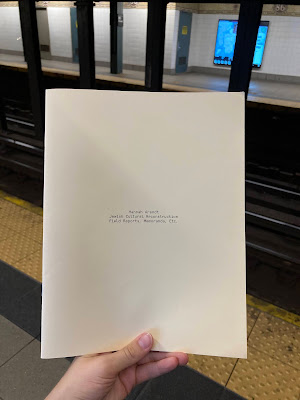 Allen Memorial Art Museum at Oberlin College,Art Institute of Chicago,Carnegie Museum of Art,Egon Schiele,Holocaust restitution,Manhattan District Attorney,Nazi art theft,World War II
Allen Memorial Art Museum at Oberlin College,Art Institute of Chicago,Carnegie Museum of Art,Egon Schiele,Holocaust restitution,Manhattan District Attorney,Nazi art theft,World War II
 No comments
No comments
Three artworks by Austrian Expressionist Egon Leo Adolf Ludwig Schiele seized at Three US Museums
 |
| Fritz Grünbaum's prisoner registry card at Dachau Concentration Camp |
On Wednesday, the New York District Attorney's Office in Manhattan executed search warrants at three US museums, seizing three artworks by Austrian Expressionist Egon Leo Adolf Ludwig Schiele.
The Schiele works are:
Russian War Prisoner, 1916, a watercolour and pencil on paper hand drawing seized at the Art Institute of Chicago;
Portrait of a Man, 1917, a pencil on paper drawing seized at the Carnegie Museum of Art;
Girl With Black Hair, 1911), a watercolor and graphite pencil on paper hand drawing seized at the Allen Memorial Art Museum at Oberlin College.
According to the warrants and Manhattan prosecutors, “there is reasonable cause to believe” that the works constitute stolen property taken from Franz Friedrich 'Fritz' Grünbaum, an Austrian Jewish cabaret artist, operetta and popular song writer, actor, killed during World War II. Grünbaum’s extraordinary 449-piece art collection was stolen by the Nazis only to have much of it sold through Eberhard Kornfeld, a Swiss auctioneer, and art dealer based in Bern, without the collector's heir's consent.
A World War II tragedy, like so many others.
After the Anschluss, (the annexation of the Federal State of Austria into the German Reich forming a "Greater Germany"), Fritz Grünbaum and his wife Elisabeth "Lilly" (nee Herzl) Grünbaum try unsuccessfully to escape to Czechoslovakia.
Apprehended and arrested Fritz Grünbaum remained imprisoned in various concentration camps until his murder. On 16 July 1938 while Fritz Grünbaum was imprisoned at Dachau, the Nazis forced him to execute a power of attorney in favour of his wife Lilly.
Shortly thereafter, and acting pursuant to her husband's under duress power of attorney Elisabeth Grünbaum is compelled to permit Austrian art historian and art dealer Franz Kieslinger, who was a member of the Nazi party, to inventory Grünbaum's property, including his art collection of over 400 pieces to be valued at 5,791 Reichsmarks (RM). In this collection were 81 pieces by Schiele.
Kieslinger inventory documented Grünbaum's Schiele artworks:
- five oil paintings listed by name,
- 55 "large hand drawings,"
- 20 pencil drawings,
- and 1 etching,
Grünbaum's collection also included French watercolours and pieces by French Impressionist Edgar Degas, the German artist Albrecht Dürer, Dutch Golden Age artist Rembrandt Harmenszoon van Rijn, known as Rembrandt, and French sculptor François Auguste René Rodin. All of the latter were identified by name in the Kieslinger inventory.
Sometime following Kieslinger's inventorying, the Grünbaum's entire art collection was deposited with Schenker & Co., A.G., a Nazi-controlled shipping company, with the firm the applying for an export license on behalf of collector "Lilly Grünbaum" in November 1938. Gruesomely, Lilly's address is listed as "formerly Vienna . . . now Buchenwalde," the Nazi concentration camp established on Ettersberg hill near Weimar, Germany.
On January 14, 1941 Fritz Grünbaum was murdered at Dachau in southern Germany. His wife then signed a declaration before an Austrian notary in connection with obtaining her husband's death certificate, stating:
"[T]here is nothing left," in other words, there is no estate. Therefore, "[b]ecause of a lack of goods or property, there [was no] estate proceeding for inheritance" before the Dachau Probate Court.
She in turn, is murdered four months later, on October 5 1942 at Maly Trostenets death camp near Minsk in Belarus.
By the early 1950s some 25% of the Grünbaum's collection, including the three seized artworks, was in circulation on the art market through Bern, Switzerland dealer Eberhard Kornfeld.
Seized in place, prosecutors say 3 seized artworks belong to the three living heirs of Fritz Grünbaum and will be transported to New York at a later date.
By: Lynda Albertson





























